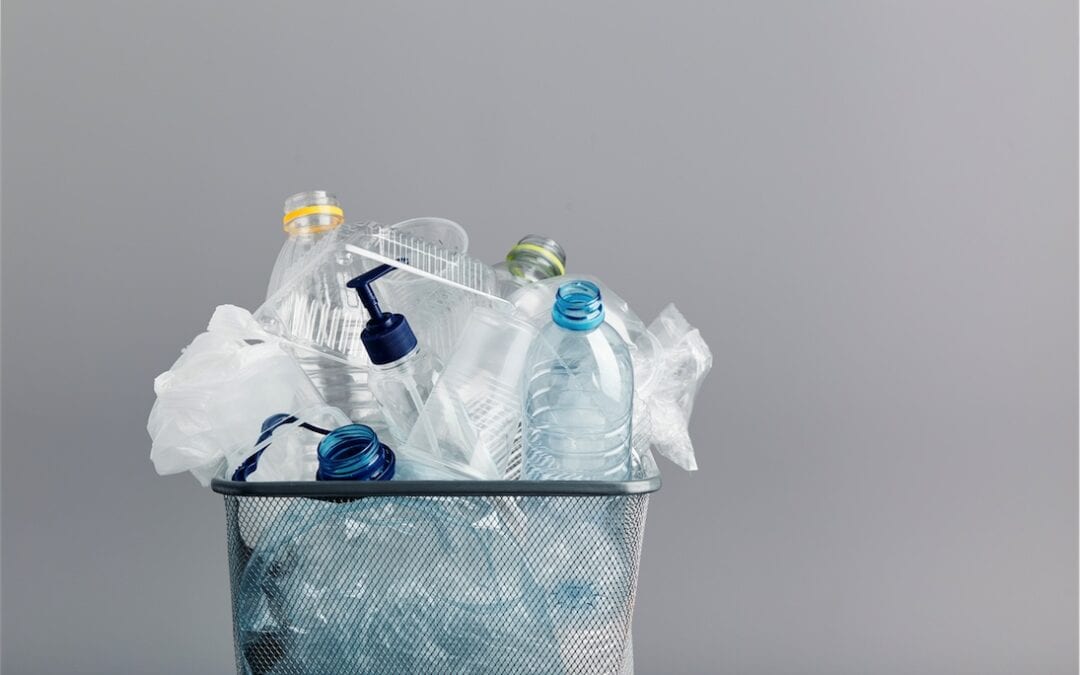Exposure to endocrine-disrupting chemicals is a factor that doesn’t receive sufficient attention when it comes to hormonal health imbalances like polycystic ovarian syndrome (PCOS) and acne. One of the most researched endocrine disruptors is Bisphenol A (BPA) an industrial chemical used in plastics and resins since the 1960s.1 BPA plastics are often found in food and water storage containers. A large study in the United States found 92% of those tested had the BPA in their urine . 2
BPA is similar in structure to diethylstilbestrol (DES) a synthetic estrogen that was prescribed to women in the 1940-1970s to prevent pregnancy complications. DES has subsequently been banned due to increased cancer risk and classified as an endocrine disruptor.
What is an endocrine disruptor?
The endocrine system is a complex and delicately balanced regulator of hormones involved in reproduction, growth, immunity and energy. Many human-made chemicals can mimic your natural hormones such as estrogen androgens and thyroid hormones. The hormone “hijacking” of these endocrine disruptors upsets your natural hormone harmony. The harmful effects of this disruption contribute to not just acne and PCOS but also hormone-related cancers, endometriosis and fertility issues.
What BPA does to your hormones
Small amounts of BPA are released from plastic polymers into food and water, especially when heated.
BPA and reproductive hormones
BPA mimics the actions of estrogen and androgens. Excess androgens are implicated in both acne and PCOS. Not only does BPA imbalance the amount of these hormones it also interferes with your liver’s ability to break them down.
BPA stimulates the release of the hormone prolactin .3 In non-breastfeeding women, prolactin should be low so that ovulation can occur. Failure to ovulate not only impairs fertility, but it also lowers progesterone. Ovulation is how you make progesterone. Healthy progesterone levels are essential for clear skin as they reduce the conversion of testosterone into the more active dihydrotestosterone (DHT). One of the reasons women with PCOS are more likely to experience acne is because they don’t ovulate regularly.
As you can see from this brief discussion, BPA throws the spanner into the endocrine works and wreaks havoc with reproductive hormonal balance. But it’s not the only thing it does.
BPA and fat metabolism
Along with reproductive hormonal disruption BPA is also classed as an “obesogen”. BPA is lipophilic (fat-loving). It accumulates in fat cells.3 BPA disrupts the hormones involved in fat metabolism, increasing both the amount of fat stored and the size of the fat cells. It also appears to alter genes which trigger fat storage.4
Exposure to BPA in childhood is linked to increased insulin resistance, fat mass and inflammation in puberty. This metabolic dysregulation feeds the fire for both acne and PCOS. Women are more sensitive to these effects than men.
Metabolic dysregulation has a knock-on effect on reproductive hormones. High insulin inhibits sex hormone-binding globulin (SHBG) and thyroid hormones .2 SHBG is a control mechanism your body uses to lock up excess, un-needed hormones. Thyroid hormones are essential for metabolism and healthy weight management.
Where do I find BPA plastics?
BPA is a component in many plastics, but we should pay particular attention to food and drink containers as our highest exposure source. You commonly find BPA plastics in:
- Food packaging
- Take away food containers.
- The lining of takeaway coffee cups
- Bottled water and soft drink
- The lining of canned foods
- EFTPOS receipt paper
What can you do?
Unfortunately plastic is so prevalent in the modern world it’s almost impossible to eliminate, but you can reduce your exposure by:
- Avoiding reheating or microwaving food in plastic containers. Choose a glass option.
- Store food in glass containers
- Use a glass or ceramic Keep Cup for your takeaway coffee
- Switch to a stainless steel or glass water bottle
- Say no to EFTPOS receipts
- Limit canned food with plastic liners.
- Avoiding teabags containing plastic. Consider switching to loose leaf tea.
- If plastic is the only option: look for BPA-free plastics.
Eliminating BPA and other endocrine disruptors are not the only thing you’ll need to do in your quest for healthy hormones and clear skin. However, it is an important consideration.
If you enjoyed this you might also like:
A guide to using herbs for acne
References:
- Monneret C. What is an endocrine disruptor ? Comptes rendus – Biol. 2017;340(9-10):403-405. doi:10.1016/j.crvi.2017.07.004
- Rubin BS, Schaeberle CM, Soto AM. The Case for BPA as an Obesogen : Contributors to the Controversy. Front Endocrinol (Lausanne). 2019;10(February):1-11. doi:10.3389/fendo.2019.00030
- Ben-jonathan N, Hugo ER, Brandebourg TD. Effects of bisphenol A on adipokine release from human tissue : Implications for the metabolic syndrome. Mol Cell Endocrinol. 2010;304(513):49-54. doi:10.1016/j.mce.2009.02.022.Effects
- Desai M, Ferrini MG, Jellyman JK, et al. In Vivo and In viro Bispehnol A Exposure effects on Adiposity. J Devolpmental Orig Heal Dis. 2019;9(6):678-687. doi:10.1017/S2040174418000600.In

Need help on your clear skin journey?
Norelle Hentschel is an experienced Naturopath with a clinic in Stones Corner, South East Brisbane and also offers Telehealth consults Australia wide. She enjoys supporting her clients to reach their health goals.
Want more articles like this?
Join us at Your Skin Remedy – the monthly missive for healthy skin from the inside out. Practical, actionable, and informative. Your clear, glowing skin starts here.
PS. Your inbox real estate is precious. Your Skin Remedy is pitch and promo free. I promise. One email a month — that’s it.

